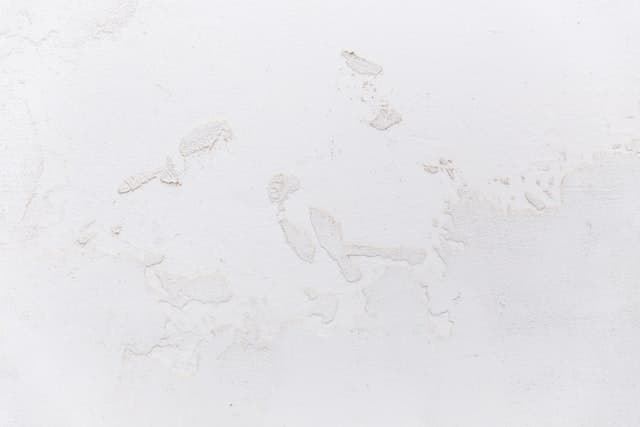Discovering mold growth on your walls can be alarming, and the last thing you want is to damage the paint while trying to get rid of it.
Mold not only mars the appearance of your walls but also poses health risks, especially for individuals with respiratory issues.
In this guide, we’ll explore effective methods to remove mold without causing harm to your wall’s paint.
Let’s dive in!
Understanding Mould and Its Risks
Before we jump into the removal process, it’s essential to understand what mold is and why it forms on walls. Mold is a type of fungus that thrives in damp and humid environments, making it a common problem in areas with poor ventilation or water leaks.
The presence of mold can lead to respiratory problems, allergies, and other health issues, making it crucial to address the problem promptly.
Identifying Mould-Infested Areas on Walls
Before tackling the mold, take a thorough look at your walls to identify the affected areas. Mould often appears as black, green, or brown patches and can have a musty smell.
Common places for mold growth include bathrooms, kitchens, basements, and areas near windows.
Gathering the Necessary Supplies
Before you begin the removal process, gather the supplies you’ll need.
These include a bucket, scrub brush, microfiber cloths, white vinegar, baking soda, tea tree oil, hydrogen peroxide, and water.
Using natural and non-toxic solutions is essential to protect both your health and the environment.
Preparation Before Removing Mould
Safety should be your top priority when dealing with mold. Wear gloves, a mask, and eye protection to avoid direct contact with mold spores.
Additionally, ensure proper ventilation by opening windows or using fans to circulate air. Cover nearby furniture and surfaces with plastic or cloth to prevent any accidental spills during the cleaning process.
Methods for Mould Removal:
Method 1: Vinegar Solution
A simple yet effective method for mold removal is using a vinegar solution. Mix equal parts of white vinegar and water in a bucket and apply it to the mold-infested areas with a scrub brush.
Allow the solution to sit for about an hour before scrubbing off the mold. Vinegar not only kills mold but also helps prevent its regrowth.
Method 2: Baking Soda Paste
Baking soda is another natural remedy for mold removal. Create a paste by mixing baking soda with water, and then apply it to the affected areas.
Let the paste sit for a few minutes before scrubbing away the mold. Baking soda not only eradicates mold but also helps absorb moisture, preventing further growth.
Method 3: Tea Tree Oil Spray
Tea tree oil is known for its antifungal properties, making it an excellent choice for mold removal. Mix a teaspoon of tea tree oil with a cup of water in a spray bottle and apply it to the mold.
Let it sit for a few minutes before wiping it away with a cloth or sponge.
Dealing with Stubborn Mould Stains
In some cases, mold stains can be stubborn and challenging to remove. If the above methods don’t completely eradicate the mold, try using hydrogen peroxide.
Apply it directly to the stains, let it sit for a few minutes, and then scrub it away. Hydrogen peroxide is an effective bleaching agent that can help remove tough mold stains.
Warning: Never mix vinegar and hydrogen peroxide. The combination can produce peracetic acid, which can be harmful and lead to irritation of the throat, lungs, eyes, and skin.
Preventing Future Mould Growth
Taking preventive measures is key to avoiding mold problems in the future. Here are some effective strategies:
Proper Ventilation: Ensure your home has good ventilation to reduce humidity levels and prevent mold growth. Use exhaust fans in bathrooms and kitchens and keep windows open when possible.
Controlling Humidity: Maintaining indoor humidity levels between 30% to 50% can discourage mold growth. Consider using a dehumidifier in damp areas, especially during humid months.
Regular Cleaning and Maintenance: Keep your walls clean by regularly wiping them with a microfiber cloth and mild soap. Promptly fix any leaks or water damage to prevent mold from finding a suitable environment to grow.
Alternative Preventive Measure
Paints with Mould-Resistant Properties: If you’re repainting your walls or planning to in the future, consider using mold-resistant paints. These paints contain additives that inhibit mold growth, providing an extra layer of protection for your walls.
Conclusion:
Removing mold from walls without damaging the paint is an achievable task with the right approach and tools. Addressing the issue promptly not only improves the aesthetics of your home but also ensures a healthier living environment for you and your loved ones.
Remember to prioritize safety by wearing protective gear and using non-toxic cleaning solutions during the removal process.
By understanding the causes of mold growth and implementing preventive measures, you can significantly reduce the chances of mold returning in the future.
Regular maintenance, proper ventilation, and controlling humidity levels are essential steps to keep your walls mold-free and your home healthy.
Do you have a mold problem in your bathroom ceiling? Read How to Clean Mold Off Bathroom Ceiling with Vinegar.
FAQs – Frequently Asked Questions
Q: Can I use bleach to remove mold from walls?
A: While bleach can be effective in killing mold, it is not recommended for wall surfaces as it may damage the paint and is harmful to breathe in. Opt for safer and natural alternatives like vinegar or hydrogen peroxide.
Q: How often should I inspect my walls for mold?
A: It’s a good idea to inspect your walls for mold at least once every few months, especially in areas prone to dampness or humidity. Early detection allows for prompt action and prevents the mold from spreading.
Q: Are mold-resistant paints worth the investment?
A: Yes, mold-resistant paints can be a worthwhile investment, especially in areas where moisture is a concern. These paints provide an extra layer of protection and can help prevent mold growth in the long term.
Q: What should I do if the mold problem is extensive and beyond my ability to handle it?
A: If the mold infestation is severe or covers a large area, it’s best to seek professional help from experienced mold remediation specialists. They have the expertise and equipment to safely remove mold and restore your home.
Q: Can I use essential oils other than tea tree oil for mold removal?
A: While tea tree oil is known for its antifungal properties, other essential oils like lavender, eucalyptus, and oregano have similar properties and can be used for mold removal as well. However, it’s essential to dilute them properly before use.
Photo by Tatiana Syrikova from Pexels

